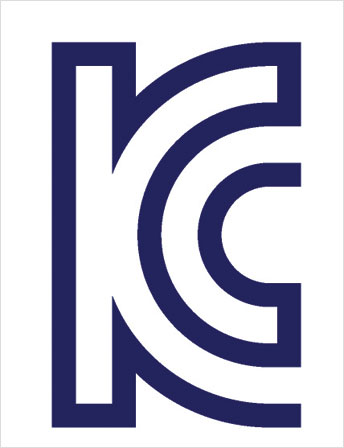Summary of KC Approval process
The National Radio and Research Agency (RRA) reviews the registration and certification applications, designates equipment testing institutions, and grants certifications to applicants whose RF devices are in compliance with the applicable standards and regulations. The RRA is under the supervision of the Ministry of Science, ICT & Future Planning (MSIP).
In order to obtain the “KC” Mark, products that are in the scope of the KC system must fulfil:
- Safety requirements (KC Safety)
- Radiofrequency requirements (KC RF)
- Electromagnetic Compatibility requirements (KC EMC)
Testing must be performed by an RRA accredited lab, which must be located in South Korea for the KC RF and a Local Representative is required. The validity of the certification is unlimited and two samples are typlically required (one normal and one modified).
The “KC Safety” is a mandatory Korean Certification System for electrical appliances used in AC 50V up to 1,000V.
The “KC RF+EMC” is mandatory for every Telecom and Radio Equipment system. This Approval is divided into three conformity assessment routes. The applicability of each route will depend on the product:
- Conformity of Certification (CoC): Equipment that can be harmful for the radio environment, the broadcasting communication network, and devices that during normal operation can be affected by radio waves are subject this certification. For example, base stations, Bluetooth speakers, CDMA, PCS, WCDMA, cellular phones, IoT equipment, LoRA, LTE, LTE-A, radar equipment for ships, repeaters, RF modules, telephones, wireless keyboards, wireless LANs, wireless mousses, wireless modems, etc.
- Conformity of Registration (CoR): Broadcasting and communication equipment that is not subject to CoC is subject to registration. For example, computers and peripheral equipment, measuring instruments, industrial devices, connectors, RF Receiver only, NFC, RFID, etc.
- Interim of Conformity (IoC): This scheme is used for new electrical and electronic products that do not have a conformity standard yet.
The most frequent route that will be applied, in order to obtain the KC Mark for radio equipment, is the Conformity of Certification. This route/scheme guarantee the compliance with radiofrequency (RF) and Electromagnetic Compatibility (EMC) requirements. The steps for compliance with the Conformity of Certification and Conformity of Registration procedure are detailed below:
CoC / CoR KC Type Approval Process

Labelling Requirements
Once a product has received the KC approval, the KC Mark and identification mark must be affixed to the product. An example is given below:

R-X-ABC-YYYYYYY
Figure 6. KC Mark example
The identification mark format is R-X-ABC-YYYYYYY.
- “R” is the broadcasting and communication equipment identifier
- “X” is the authentication field identification number. The certification field depends on a certification scheme. The identification number can be:
- “С” - certification
- “R” - registration
- “I” - interim
- “ABC” is the RRA's applicant identification code
- “YYYYYYY” is the applicant's "Product Identification Code"
The size of the KC Mark can be adjusted according to the size of the product. The minimum vertical height of the mark must be 5mm. However, for the ultra-small products, the size of the KC Mark can be adjusted.